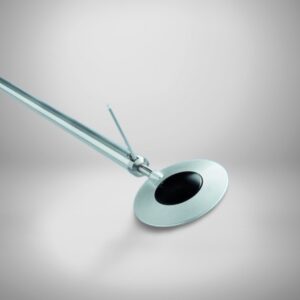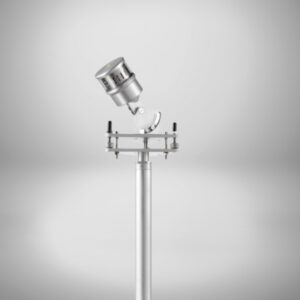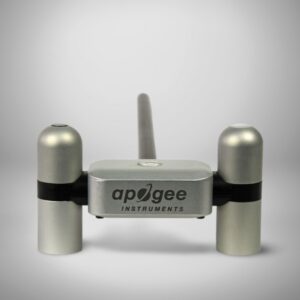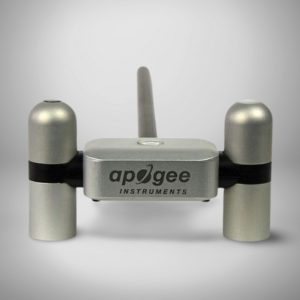LPNET14 – 4-Component Net-Radiometer:
LPNET14 is a 4-component net radiometer for the measurement of the net radiation between 0.3 μm and 45 μm.
The net-radiometer consists of two pyranometers (one for the measurement of the global radiation Esw↓ and the other one for the measurement of the reflected solar radiation Esw↑ ) and a pair of pyrgeometers (one for the measurement of the infrared radiation emitted by the sky EFIR↓ and the other one for the infrared emitted by the ground surface EFIR↑).
The LPNET14 is equipped with a temperature sensor (NTC). The measurement of the temperature is needed for the measurement with the two pyrgeometers; in fact, the far infrared is derived by measuring the thermopile output and by knowing the instrument’s temperature.
The net radiometer is suitable for outdoor use in all weather conditions and requires little maintenance.
Working principle
The pyranometers that make up the LPNET14 measure the radiation for wave lengths between 0.3 µm and 3.0 µm, while the pyrgeometers measure the irradiance in the spectral range between 5.5 µm and 45 µm.
The pyranometers are based on a thermopile sensor which sensitive surface is covered by a matt black paint so to allow the instrument not to be selective at various wavelengths. The pyranometer spectral range is determined by the transmittance of the two glass domes type K5.
Radiant energy is absorbed by the thermopile black surface, creating a difference of temperature between the centre of the thermopile (hot junction) and the pyranometer body (cold junction). Thanks to the Seebeck effect, the difference of temperature between hot and cold junction is converted into a Difference of Potential.
Also the pyrgeometers are based on a thermopile. In this case, to protect the thermopile, silicon discs are used. Silicon is transparent to wavelengths longer than 1.1 µm therefore, on the inside of the window, there is a filter to block radiation up to 4.5-5 μm. The silicon external surface, which is exposed to weathering, is coated with a scratch-resistant coating (DLC) to ensure strength and durability in all weather conditions. The antiscratch coating offers the advantage of cleaning the surface without risk of scratching the window.
Application and features of LPNET14 – 4-Component Net-Radiometer:
Application |
Features |
|---|---|
| ✅ Solar PV Plant ✅ Climate change monitoring ✅ Weather Research ✅ Measurement of energy balance |
✅ One Pyranometer for global radiation ✅ One Pyranometer for reflected solar radiation ✅ One Pyrgeometer for infrared radiation emitted from the sky. ✅ One Pyrgeometer for infrared radiation emitted from the ground. ✅ Suitable for outdoor use in all weather conditions. ✅ Requires little maintenance ✅ Each radiometer is individually calibrated. ✅ No power supply required |







Reviews
There are no reviews yet.